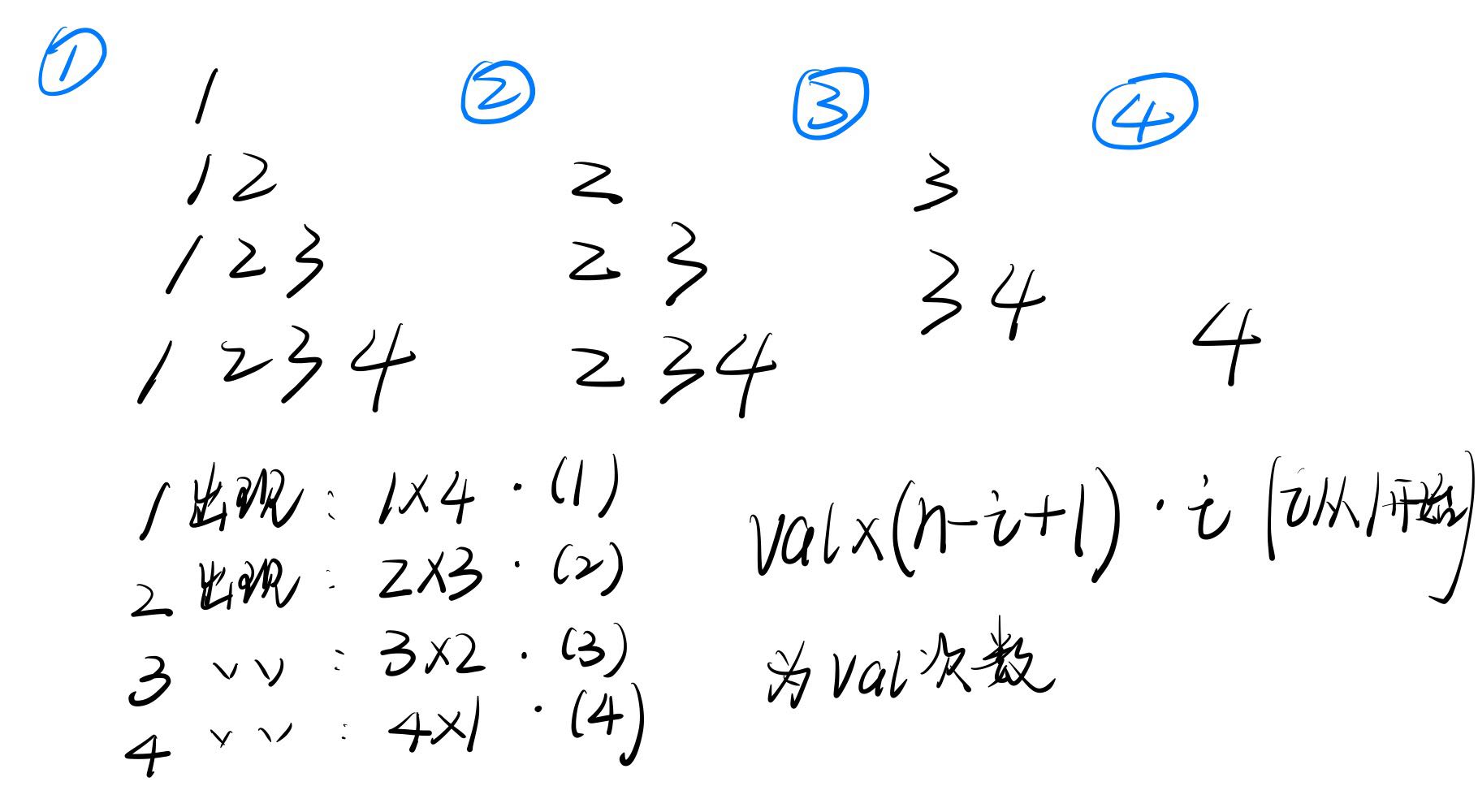PAT A1104 Sum of Number Segments (20分)
Given a sequence of positive numbers, a segment is defined to be a consecutive subsequence. For example, given the sequence { 0.1, 0.2, 0.3, 0.4 }, we have 10 segments: (0.1) (0.1, 0.2) (0.1, 0.2, 0.3) (0.1, 0.2, 0.3, 0.4) (0.2) (0.2, 0.3) (0.2, 0.3, 0.4) (0.3) (0.3, 0.4) and (0.4).
Now given a sequence, you are supposed to find the sum of all the numbers in all the segments. For the previous example, the sum of all the 10 segments is 0.1 + 0.3 + 0.6 + 1.0 + 0.2 + 0.5 + 0.9 + 0.3 + 0.7 + 0.4 = 5.0
Input Specification:
Each input file contains one test case. For each case, the first line gives a positive integer N, the size of the sequence which is no more than 105. The next line contains N positive numbers in the sequence, each no more than 1.0, separated by a space.
Output Specification:
For each test case, print in one line the sum of all the numbers in all the segments, accurate up to 2 decimal places.
Sample Input:
4
0.1 0.2 0.3 0.4
Sample Output:
5.00
思路:

数学规律直接上图
#include <iostream>
using namespace std;
int n;
int main() {
cin>>n;
long long ans=0;
double temp;
for(int i=1; i<=n; i++) {
cin>>temp;
ans+=(long long)(temp*1000)*(n-i+1)*i;
}
printf("%.2f",ans/1000.0);
return 0;
}





